Click on an image for detailed information
Click on a column heading to sort in ascending or descending order

My
List |
Addition Date
|
Target
|
Mission
|
Instrument
|
Size
|

|
2015-10-13 |
Jupiter
|
Hubble Space Telescope
|
WFPC3
|
3600x1596x3 |
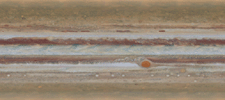
|
-
PIA19643:
-
Spinning Jupiter and Global Map

Full Resolution:
TIFF
(13.13 MB)
JPEG
(328.6 kB)
|

|
2015-10-13 |
Jupiter
|
Hubble Space Telescope
|
WFPC3
|
900x536x3 |
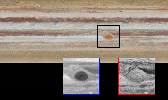
|
-
PIA19648:
-
New Changes in Jupiter's Great Red Spot

Full Resolution:
TIFF
(859.4 kB)
JPEG
(55.46 kB)
|

|
2015-10-13 |
Jupiter
|
Hubble Space Telescope
|
WFPC3
|
1798x446x3 |

|
-
PIA19659:
Jupiter Wave
Full Resolution:
TIFF
(2.407 MB)
JPEG
(52.69 kB)
|

|
1998-05-02 |
Jupiter
|
Hubble Space Telescope
|
WFPC2
|
795x900x3 |

|
-
PIA01254:
-
Hubble Provides Complete View of Jupiter's Auroras
Full Resolution:
TIFF
(1.387 MB)
JPEG
(114 kB)
|

|
1998-05-02 |
Jupiter
|
Hubble Space Telescope
|
WFPC2
|
1152x860x3 |
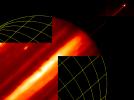
|
-
PIA01255:
-
Hubble Provides Infrared View of Jupiter's Moon, Ring, and Clouds
Full Resolution:
TIFF
(645.9 kB)
JPEG
(67.7 kB)
|

|
1998-05-02 |
Jupiter
|
Hubble Space Telescope
|
WFPC2
|
720x900x3 |

|
-
PIA01256:
-
Hubble Captures Volcanic Eruption Plume From Io
Full Resolution:
TIFF
(1.097 MB)
JPEG
(65.49 kB)
|

|
1998-05-02 |
Jupiter
|
Hubble Space Telescope
|
WFPC2
|
2069x2489x3 |

|
-
PIA01257:
-
Hubble Images Reveal Jupiter's Auroras
Full Resolution:
TIFF
(6.679 MB)
JPEG
(483.2 kB)
|

|
1998-05-02 |
Jupiter
|
Hubble Space Telescope
|
WFPC2
|
720x600x1 |
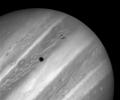
|
-
PIA01258:
-
Rare Hubble Portrait of Io and Jupiter
Full Resolution:
TIFF
(305.8 kB)
JPEG
(28.52 kB)
|

|
1998-05-02 |
Jupiter
|
Hubble Space Telescope
|
WFPC2
|
850x490x3 |
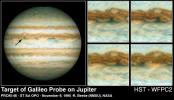
|
-
PIA01259:
-
Hubble Views the Galileo Probe Entry Site on Jupiter
Full Resolution:
TIFF
(993.4 kB)
JPEG
(64.05 kB)
|

|
1998-05-02 |
Jupiter
|
Hubble Space Telescope
|
WFPC2
|
800x600x3 |
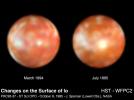
|
-
PIA01260:
-
Hubble Discovers Bright New Spot on Io
Full Resolution:
TIFF
(604.4 kB)
JPEG
(33.67 kB)
|

|
1998-05-02 |
Jupiter
|
Hubble Space Telescope
|
WFPC2
|
600x700x3 |

|
-
PIA01261:
-
Hubble Gallery of Jupiter's Galilean Satellites
Full Resolution:
TIFF
(527.3 kB)
JPEG
(44.81 kB)
|

|
1998-05-02 |
Jupiter
|
Hubble Space Telescope
|
WFPC2
|
800x800x3 |
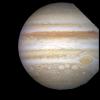
|
-
PIA01262:
-
Hubble Tracks Jupiter Storms
Full Resolution:
TIFF
(1.085 MB)
JPEG
(40.51 kB)
|

|
1998-05-02 |
Jupiter
|
Hubble Space Telescope
|
WFPC2
|
750x700x3 |
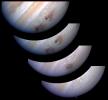
|
-
PIA01263:
-
Jupiter G Impact Evolution
Full Resolution:
TIFF
(752.8 kB)
JPEG
(31.92 kB)
|

|
1998-05-02 |
Jupiter
|
Hubble Space Telescope
|
WFPC2
|
830x568x3 |
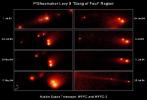
|
-
PIA01264:
-
Evolution of the P/Shoemaker-Levy 9 "Gang of Four" Region
Full Resolution:
TIFF
(543.5 kB)
JPEG
(69.45 kB)
|

|
1998-05-02 |
Jupiter
|
Hubble Space Telescope
|
WFPC2
|
800x600x1 |
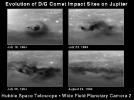
|
-
PIA01265:
-
Month-long Evolution of the D/G Jupiter Impact Sites from Comet P/Shoemaker-Levy 9
Full Resolution:
TIFF
(226.8 kB)
JPEG
(54.55 kB)
|

|
1998-05-02 |
Jupiter
|
Hubble Space Telescope
|
WFPC2
|
600x854x1 |

|
-
PIA01266:
-
Jupiter's Upper Atmospheric Winds Revealed in Ultraviolet Images by Hubble Telescope
Full Resolution:
TIFF
(239.6 kB)
JPEG
(62.37 kB)
|

|
1998-05-02 |
Jupiter
|
Hubble Space Telescope
|
WFPC2
|
800x600x3 |
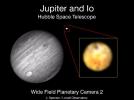
|
-
PIA01267:
-
Hubble Space Telescope Resolves Volcanoes on Io
Full Resolution:
TIFF
(357 kB)
JPEG
(40.59 kB)
|

|
1999-08-24 |
Jupiter
|
Hubble Space Telescope
|
WFPC2
|
2401x2870x3 |

|
-
PIA01593:
-
Hubble Views Ancient Storm in the Atmosphere of Jupiter - Montage
Full Resolution:
TIFF
(14.35 MB)
JPEG
(423.5 kB)
|

|
1999-08-24 |
Jupiter
|
Hubble Space Telescope
|
WFPC2
|
718x716x3 |
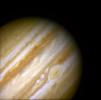
|
-
PIA01594:
-
Hubble Views Ancient Storm in the Atmosphere of Jupiter - Full Disk
Full Resolution:
TIFF
(1.127 MB)
JPEG
(30.32 kB)
|

|
1999-08-24 |
Jupiter
|
Hubble Space Telescope
|
WFPC2
|
321x321x3 |
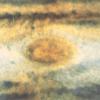
|
-
PIA01595:
-
Hubble Views Ancient Storm in the Atmosphere of Jupiter - May, 1992
Full Resolution:
TIFF
(306.5 kB)
JPEG
(13.83 kB)
|

|
1999-08-24 |
Jupiter
|
Hubble Space Telescope
|
WFPC2
|
321x321x3 |
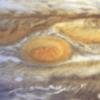
|
-
PIA01596:
-
Hubble Views Ancient Storm in the Atmosphere of Jupiter - July, 1994
Full Resolution:
TIFF
(301.3 kB)
JPEG
(12.4 kB)
|

|
1999-08-24 |
Jupiter
|
Hubble Space Telescope
|
WFPC2
|
321x321x3 |
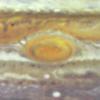
|
-
PIA01597:
-
Hubble Views Ancient Storm in the Atmosphere of Jupiter - August, 1994
Full Resolution:
TIFF
(285.2 kB)
JPEG
(10.9 kB)
|

|
1999-08-24 |
Jupiter
|
Hubble Space Telescope
|
WFPC2
|
321x321x3 |
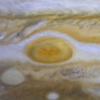
|
-
PIA01598:
-
Hubble Views Ancient Storm in the Atmosphere of Jupiter - February, 1995
Full Resolution:
TIFF
(218.9 kB)
JPEG
(9.833 kB)
|

|
1999-08-24 |
Jupiter
|
Hubble Space Telescope
|
WFPC2
|
321x321x3 |
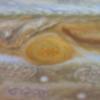
|
-
PIA01599:
-
Hubble Views Ancient Storm in the Atmosphere of Jupiter - October, 1995
Full Resolution:
TIFF
(245 kB)
JPEG
(9.032 kB)
|

|
1999-08-24 |
Jupiter
|
Hubble Space Telescope
|
WFPC2
|
321x321x3 |
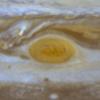
|
-
PIA02400:
-
Hubble Views Ancient Storm in the Atmosphere of Jupiter - October, 1996
Full Resolution:
TIFF
(219.7 kB)
JPEG
(9.823 kB)
|

|
1999-08-24 |
Jupiter
|
Hubble Space Telescope
|
WFPC2
|
321x321x3 |
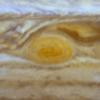
|
-
PIA02401:
-
Hubble Views Ancient Storm in the Atmosphere of Jupiter - April, 1997
Full Resolution:
TIFF
(217.3 kB)
JPEG
(10.36 kB)
|

|
1999-08-24 |
Jupiter
|
Hubble Space Telescope
|
WFPC2
|
321x321x3 |
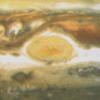
|
-
PIA02402:
-
Hubble Views Ancient Storm in the Atmosphere of Jupiter - June, 1999
Full Resolution:
TIFF
(258.3 kB)
JPEG
(11.79 kB)
|

|
2000-10-23 |
Jupiter
|
Hubble Space Telescope
|
WFPC2
|
693x485x1 |
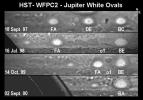
|
-
PIA02823:
-
Oval Storms Merging on Jupiter
Full Resolution:
TIFF
(223.6 kB)
JPEG
(43.14 kB)
|

|
2001-07-21 |
Jupiter
|
Hubble Space Telescope
|
WFPC2
|
752x417x3 |

|
-
PIA03155:
-
Satellite Footprints Seen in Jupiter Aurora
Full Resolution:
TIFF
(202.4 kB)
JPEG
(34.06 kB)
|

|
2002-10-08 |
Jupiter
|
Galileo
Hubble Space Telescope
IRTF
|
WFPC2
|
650x300x3 |
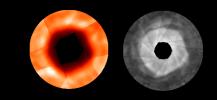
|
-
PIA03864:
-
Cold Hole Over Jupiter's Pole
Full Resolution:
TIFF
(176.2 kB)
JPEG
(15.88 kB)
|

|
1999-05-21 |
Io
|
Hubble Space Telescope
|
WFPC2
|
3000x1930x3 |
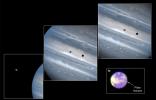
|
-
PIA01540:
-
Hubble Clicks Images of Io Sweeping Across Jupiter
Full Resolution:
TIFF
(6.217 MB)
JPEG
(285.7 kB)
|

|
2016-09-02 |
Jupiter
|
Juno
|
Waves
|
1157x609x3 |
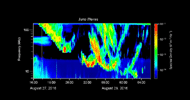
|
-
PIA21037:
-
Juno Listens to Jupiter's Auroras Sing

Full Resolution:
TIFF
(555.7 kB)
JPEG
(69.43 kB)
|

|
2021-12-17 |
Jupiter
|
Juno
|
Waves
|
781x443x3 |
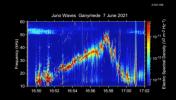
|
-
PIA25030:
-
Audio of Juno's Ganymede Flyby
Full Resolution:
TIFF
(524.7 kB)
JPEG
(41.85 kB)
|

|
2011-01-26 |
Jupiter
|
IRTF
|
Visible Light Camera
Gemini North Telescope
Hubble Space Telescope
VLT
|
1202x1200x3 |
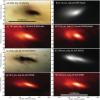
|
-
PIA13762:
-
Eight Looks at the Jupiter Impact
Full Resolution:
TIFF
(4.332 MB)
JPEG
(138.1 kB)
|

|
2008-01-25 |
Jupiter
|
Hubble Space Telescope
|
Visible Light
|
2000x2682x3 |

|
-
PIA10224:
-
Jupiter Eruptions
Full Resolution:
TIFF
(16.11 MB)
JPEG
(290.4 kB)
|

|
2002-05-10 |
Ganymede
|
Galileo
Voyager
|
VG Imaging Science Subsystem
VG Imaging Science Subsystem - Narrow Angle
|
8817x4382x3 |
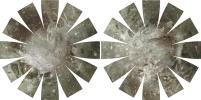
|
-
PIA03781:
-
Global Map of Ganymede
Full Resolution:
TIFF
(79.65 MB)
JPEG
(4.501 MB)
|

|
2002-10-17 |
Callisto
|
Galileo
Voyager
|
VG Imaging Science Subsystem
Solid-State Imaging
|
8860x4490x3 |
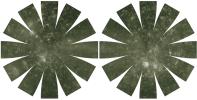
|
-
PIA03876:
-
Callisto Hemispherical Globes
Full Resolution:
TIFF
(49.38 MB)
JPEG
(3.662 MB)
|

|
1997-01-09 |
Jupiter
|
Voyager
|
VG ISS - Wide Angle
|
800x800x1 |
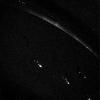
|
-
PIA00204:
-
Lights In The Night
Full Resolution:
TIFF
(153.9 kB)
JPEG
(164.8 kB)
|

|
1998-06-04 |
Ganymede
|
Voyager
|
VG ISS - Wide Angle
|
1024x520x3 |
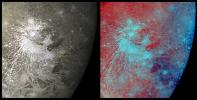
|
-
PIA00334:
-
Crater Rays on Ganymede
Full Resolution:
TIFF
(1.644 MB)
JPEG
(96.83 kB)
|

|
1996-02-01 |
Jupiter
|
Voyager
|
VG ISS - Narrow Angle
|
895x848x3 |
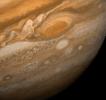
|
-
PIA00014:
-
Jupiter Great Red Spot
Full Resolution:
TIFF
(1.502 MB)
JPEG
(56.12 kB)
|

|
1996-01-29 |
Io
|
Voyager
|
VG ISS - Narrow Angle
|
1000x1000x3 |
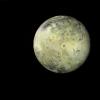
|
-
PIA00023:
-
Io - Full Disk
Full Resolution:
TIFF
(1.21 MB)
JPEG
(40.95 kB)
|

|
1996-08-12 |
Callisto
|
Voyager
|
VG ISS - Narrow Angle
|
2000x2000x3 |
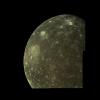
|
-
PIA00080:
-
Callisto Mosaic
Full Resolution:
TIFF
(5.114 MB)
JPEG
(252.5 kB)
|

|
1996-01-29 |
Ganymede
|
Voyager
|
VG ISS - Narrow Angle
|
2000x2000x3 |
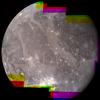
|
-
PIA00081:
-
Ganymede Mosaic
Full Resolution:
TIFF
(9.883 MB)
JPEG
(445.4 kB)
|

|
1996-01-29 |
Jupiter
|
Voyager
|
VG ISS - Narrow Angle
|
820x540x3 |
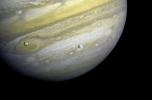
|
-
PIA00144:
-
Jupiter with Satellites Io and Europa
Full Resolution:
TIFF
(821.7 kB)
JPEG
(31.32 kB)
|

|
1996-03-13 |
Jupiter
|
Voyager
|
VG ISS - Narrow Angle
|
1000x1000x3 |
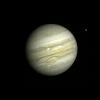
|
-
PIA00235:
-
Jupiter with Satellite Io
Full Resolution:
TIFF
(1.226 MB)
JPEG
(37.26 kB)
|

|
1996-07-17 |
Ganymede
|
Voyager
|
VG ISS - Narrow Angle
|
300x300x1 |
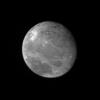
|
-
PIA00351:
-
Ganymede at 2.6 million miles
Full Resolution:
TIFF
(33.81 kB)
JPEG
(4.17 kB)
|

|
1996-07-17 |
Ganymede
|
Voyager
|
VG ISS - Narrow Angle
|
300x300x3 |
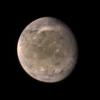
|
-
PIA00352:
-
Ganymede at 3.4 million miles
Full Resolution:
TIFF
(133.4 kB)
JPEG
(5.592 kB)
|

|
1999-03-15 |
Ganymede
|
Voyager
|
VG ISS - Narrow Angle
|
600x600x3 |
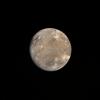
|
-
PIA00353:
-
Ganymede Full Disk
Full Resolution:
TIFF
(310.5 kB)
JPEG
(13.11 kB)
|

|
1996-07-17 |
Ganymede
|
Voyager
|
VG ISS - Narrow Angle
|
460x780x1 |

|
-
PIA00354:
-
Ganymede at 87,000 miles
Full Resolution:
TIFF
(218.7 kB)
JPEG
(115.5 kB)
|

|
1999-02-06 |
Ganymede
|
Voyager
|
VG ISS - Narrow Angle
|
740x730x3 |
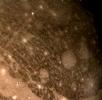
|
-
PIA00356:
-
Ganymede's Northern Hemisphere
Full Resolution:
TIFF
(1.381 MB)
JPEG
(82.46 kB)
|

|
1999-02-06 |
Ganymede
|
Voyager
|
VG ISS - Narrow Angle
|
816x870x3 |

|
-
PIA00357:
-
Bright Halo Impact Crater on Ganymede
Full Resolution:
TIFF
(2.004 MB)
JPEG
(92.06 kB)
|

|
1999-03-06 |
Jupiter
|
Voyager
|
VG ISS - Narrow Angle
|
1000x1000x3 |
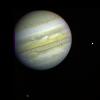
|
-
PIA00358:
-
Jupiter and Three Galilean Satellites
Full Resolution:
TIFF
(1.514 MB)
JPEG
(50.61 kB)
|

|
1999-03-06 |
Jupiter
|
Voyager
|
VG ISS - Narrow Angle
|
916x783x3 |
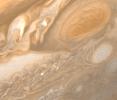
|
-
PIA00359:
-
Jupiter Great Red Spot and White Ovals
Full Resolution:
TIFF
(1.78 MB)
JPEG
(66.58 kB)
|

|
1999-03-06 |
Jupiter
|
Voyager
|
VG ISS - Narrow Angle
|
915x894x3 |
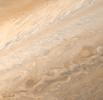
|
-
PIA00360:
-
High Winds in the Jovian Mid-latitudes
Full Resolution:
TIFF
(1.887 MB)
JPEG
(76.32 kB)
|

|
1999-08-31 |
Io
|
Voyager
|
VG ISS - Narrow Angle
|
619x721x3 |

|
-
PIA00361:
-
Io Surface Deposits and Volcano
Full Resolution:
TIFF
(1.38 MB)
JPEG
(49.09 kB)
|

|
1999-03-06 |
Callisto
|
Voyager
|
VG ISS - Narrow Angle
|
600x640x3 |

|
-
PIA00362:
-
Callisto's Icy Surface
Full Resolution:
TIFF
(637.5 kB)
JPEG
(23.86 kB)
|

|
1996-11-13 |
Jupiter
|
Voyager
|
VG ISS - Narrow Angle
|
850x575x3 |
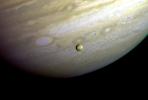
|
-
PIA00371:
-
Jupiter - Io In Front of Jupiter's Turbulent Clouds
Full Resolution:
TIFF
(797.6 kB)
JPEG
(28.95 kB)
|

|
1996-11-13 |
Jupiter
|
Voyager
|
VG ISS - Narrow Angle
|
790x900x3 |

|
-
PIA00372:
-
Jupiter - Region from the Great Red Spot to the South Pole
Full Resolution:
TIFF
(1.269 MB)
JPEG
(60.4 kB)
|

|
1996-11-16 |
Io
|
Voyager
|
VG ISS - Narrow Angle
|
325x400x1 |

|
-
PIA00373:
-
Io - Volcanic Eruption
Full Resolution:
TIFF
(66.68 kB)
JPEG
(11.83 kB)
|

|
1996-11-16 |
Io
|
Voyager
|
VG ISS - Narrow Angle
|
220x300x1 |

|
-
PIA00374:
-
Io - One of at Least Four Simultaneous Erupting Volcanic Eruptions
Full Resolution:
TIFF
(25.26 kB)
JPEG
(4.047 kB)
|

|
1996-11-16 |
Io
|
Voyager
|
VG ISS - Narrow Angle
|
800x795x1 |
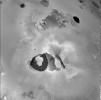
|
-
PIA00375:
-
Io - Volcano Loki and Loki Patera
Full Resolution:
TIFF
(517.3 kB)
JPEG
(51.9 kB)
|

|
1997-01-09 |
J Rings
|
Voyager
|
VG ISS - Narrow Angle
|
439x545x1 |

|
-
PIA00376:
-
Rings of Jupiter Star Trail
Full Resolution:
TIFF
(104.2 kB)
JPEG
(17.76 kB)
|

|
1997-01-09 |
J Rings
|
Voyager
|
VG ISS - Narrow Angle
|
439x545x1 |

|
-
PIA00377:
-
Rings of Jupiter
Full Resolution:
TIFF
(21.08 kB)
JPEG
(6.934 kB)
|

|
1997-01-09 |
Io
|
Voyager
|
VG ISS - Narrow Angle
|
680x500x1 |
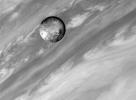
|
-
PIA00378:
-
Io At 5 Million Miles
Full Resolution:
TIFF
(304.1 kB)
JPEG
(34.45 kB)
|

|
1997-01-09 |
Io
|
Voyager
|
VG ISS - Narrow Angle
|
140x140x1 |
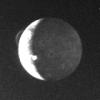
|
-
PIA00379:
-
Volcanic Eruptions on Io
Full Resolution:
TIFF
(7.186 kB)
JPEG
(2.809 kB)
|

|
1997-01-09 |
Ganymede
|
Voyager
|
VG ISS - Narrow Angle
|
700x500x1 |
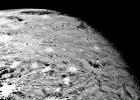
|
-
PIA00380:
-
Ganymede At 150,000 Miles
Full Resolution:
TIFF
(293.4 kB)
JPEG
(87.75 kB)
|

|
1998-06-08 |
Io
|
Voyager
|
VG ISS - Narrow Angle
|
1150x1430x3 |

|
-
PIA00401:
-
Io: Cylindrical Projection
Full Resolution:
TIFF
(4.465 MB)
JPEG
(229.2 kB)
|

|
1996-09-26 |
Jupiter
|
Voyager
|
VG ISS - Narrow Angle
|
600x600x3 |
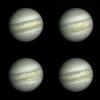
|
-
PIA00454:
-
Early Voyager 1 Images of Jupiter
Full Resolution:
TIFF
(491.5 kB)
JPEG
(21.78 kB)
|

|
1996-09-26 |
Jupiter
|
Voyager
|
VG ISS - Narrow Angle
|
500x500x3 |
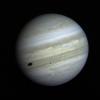
|
-
PIA00455:
-
Jupiter with Io Crossing
Full Resolution:
TIFF
(412 kB)
JPEG
(15.15 kB)
|

|
1996-09-26 |
Jupiter
|
Voyager
|
VG ISS - Narrow Angle
|
846x800x3 |
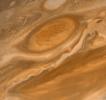
|
-
PIA00456:
-
Jupiter's Great Red Spot and South Equatorial Belt
Full Resolution:
TIFF
(1.41 MB)
JPEG
(48.12 kB)
|

|
1996-09-26 |
Callisto
|
Voyager
|
VG ISS - Narrow Angle
|
800x800x3 |
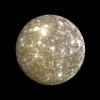
|
-
PIA00457:
-
Callisto False Color
Full Resolution:
TIFF
(789 kB)
JPEG
(49.94 kB)
|

|
1996-09-26 |
Jupiter
|
Voyager
|
VG ISS - Narrow Angle
|
607x496x3 |
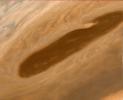
|
-
PIA00458:
-
Jupiter's North Equatorial Belt
Full Resolution:
TIFF
(748.4 kB)
JPEG
(21.62 kB)
|

|
1996-09-26 |
Europa
|
Voyager
|
VG ISS - Narrow Angle
|
704x680x3 |
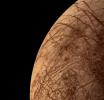
|
-
PIA00459:
-
Europa During Voyager 2 Closest Approach
Full Resolution:
TIFF
(895.6 kB)
JPEG
(49.13 kB)
|

|
1997-01-09 |
Callisto
|
Voyager
|
VG ISS - Narrow Angle
|
740x750x1 |

|
-
PIA00484:
-
Concentric Rings Surrounding Valhalla
Full Resolution:
TIFF
(688.5 kB)
JPEG
(191.9 kB)
|

|
1999-01-08 |
Jupiter
|
Voyager
|
VG ISS - Narrow Angle
|
400x400x3 |
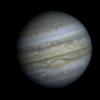
|
-
PIA01353:
-
Jupiter
Full Resolution:
TIFF
(185.9 kB)
JPEG
(9.675 kB)
|

|
1999-10-14 |
Io
|
Voyager
|
VG ISS - Narrow Angle
|
512x512x3 |
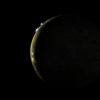
|
-
PIA01362:
-
Io
Full Resolution:
TIFF
(215.9 kB)
JPEG
(16.02 kB)
|

|
1998-12-05 |
Io
|
Voyager
|
VG ISS - Narrow Angle
|
600x600x3 |
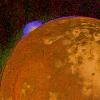
|
-
PIA01368:
-
Jupiter's Moon Io
Full Resolution:
TIFF
(736.2 kB)
JPEG
(138.3 kB)
|

|
1998-12-05 |
Jupiter
|
Voyager
|
VG ISS - Narrow Angle
|
916x901x3 |
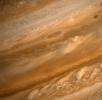
|
-
PIA01369:
-
Jupiter from Voyager 2
Full Resolution:
TIFF
(1.809 MB)
JPEG
(68.65 kB)
|

|
1998-12-05 |
Jupiter
|
Voyager
|
VG ISS - Narrow Angle
|
800x920x3 |

|
-
PIA01370:
-
Jupiter's Great Red Spot
Full Resolution:
TIFF
(1.251 MB)
JPEG
(49.61 kB)
|

|
1998-11-04 |
Jupiter
|
Voyager
|
VG ISS - Narrow Angle
|
400x400x3 |
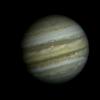
|
-
PIA01371:
-
Voyager Picture of Jupiter
Full Resolution:
TIFF
(152.4 kB)
JPEG
(8.968 kB)
|

|
1998-12-05 |
Jupiter
|
Voyager
|
VG ISS - Narrow Angle
|
5489x4637x3 |
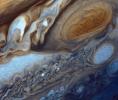
|
-
PIA01384:
-
Jupiter's Great Red Spot
Full Resolution:
TIFF
(76.36 MB)
JPEG
(3.275 MB)
|

|
1999-02-08 |
Europa
|
Voyager
|
VG ISS - Narrow Angle
|
790x790x1 |
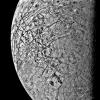
|
-
PIA01503:
-
Europa's Fractured Surface
Full Resolution:
TIFF
(384.5 kB)
JPEG
(172.2 kB)
|

|
1999-02-08 |
Europa
|
Voyager
|
VG ISS - Narrow Angle
|
864x922x1 |

|
-
PIA01504:
-
Europa's Evening Terminator
Full Resolution:
TIFF
(792.2 kB)
JPEG
(127.9 kB)
|

|
1999-03-13 |
Jupiter
|
Voyager
|
VG ISS - Narrow Angle
|
400x400x3 |
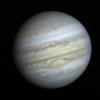
|
-
PIA01509:
-
Jupiter Full Disk with Great Red Spot
Full Resolution:
TIFF
(274.6 kB)
JPEG
(11.19 kB)
|

|
1999-03-15 |
Callisto
|
Voyager
|
VG ISS - Narrow Angle
|
300x300x3 |
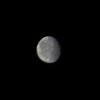
|
-
PIA01510:
-
Callisto From 8,023,000 kilometers
Full Resolution:
TIFF
(34.73 kB)
JPEG
(2.891 kB)
|

|
1999-03-15 |
Callisto
|
Voyager
|
VG ISS - Narrow Angle
|
300x300x1 |
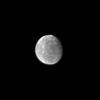
|
-
PIA01511:
-
Callisto From 7,000,000 kilometers
Full Resolution:
TIFF
(18.9 kB)
JPEG
(2.549 kB)
|

|
1999-03-13 |
Jupiter
|
Voyager
|
VG ISS - Narrow Angle
|
865x692x3 |
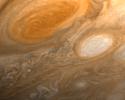
|
-
PIA01512:
-
Jupiter's Great Red Spot and White Ovals
Full Resolution:
TIFF
(1.188 MB)
JPEG
(68.23 kB)
|

|
1999-03-13 |
Jupiter
|
Voyager
|
VG ISS - Narrow Angle
|
919x837x3 |
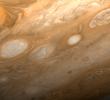
|
-
PIA01513:
-
Jupiter - Southeast of Great Red Spot
Full Resolution:
TIFF
(1.426 MB)
JPEG
(79.63 kB)
|

|
1999-03-13 |
Io
|
Voyager
|
VG ISS - Narrow Angle
|
783x930x3 |

|
-
PIA01514:
-
Io Surface Deposits and Volcanic Craters
Full Resolution:
TIFF
(2.1 MB)
JPEG
(70.93 kB)
|

|
1999-03-13 |
Ganymede
|
Voyager
|
VG ISS - Narrow Angle
|
830x650x3 |
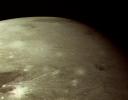
|
-
PIA01515:
-
Bright Ray Craters in Ganymede's Northern Hemisphere
Full Resolution:
TIFF
(974.3 kB)
JPEG
(49.71 kB)
|

|
1999-03-13 |
Ganymede
|
Voyager
|
VG ISS - Narrow Angle
|
875x905x3 |

|
-
PIA01516:
-
Cratering and Grooved Terrain on Ganymede
Full Resolution:
TIFF
(1.662 MB)
JPEG
(92.41 kB)
|

|
1999-03-13 |
Ganymede
|
Voyager
|
VG ISS - Narrow Angle
|
860x901x3 |

|
-
PIA01517:
-
Ganymede's Equatorial Region
Full Resolution:
TIFF
(1.486 MB)
JPEG
(91.2 kB)
|

|
1999-03-13 |
Jupiter
|
Voyager
|
VG ISS - Narrow Angle
|
581x915x3 |

|
-
PIA01518:
-
Jupiter Plume
Full Resolution:
TIFF
(1.083 MB)
JPEG
(42.3 kB)
|

|
1999-03-13 |
Jupiter
|
Voyager
|
VG ISS - Narrow Angle
|
487x559x3 |

|
-
PIA01519:
-
Disturbed Region West of the Great Red Spot
Full Resolution:
TIFF
(403.2 kB)
JPEG
(17.82 kB)
|

|
1999-03-13 |
Ganymede
|
Voyager
|
VG ISS - Narrow Angle
|
780x910x3 |

|
-
PIA01520:
-
Ganymede's Varied Terrain
Full Resolution:
TIFF
(1.855 MB)
JPEG
(68.42 kB)
|

|
1999-03-13 |
Jupiter
|
Voyager
|
VG ISS - Narrow Angle
|
937x910x3 |
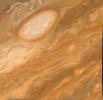
|
-
PIA01521:
-
Jupiter White Oval
Full Resolution:
TIFF
(1.655 MB)
JPEG
(72.53 kB)
|

|
1999-03-23 |
Europa
|
Voyager
|
VG ISS - Narrow Angle
|
790x790x1 |
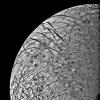
|
-
PIA01523:
-
Europa Linear Features from 246,000 kilometers
Full Resolution:
TIFF
(353.8 kB)
JPEG
(122.5 kB)
|

|
1999-03-23 |
Jupiter
|
Voyager
|
VG ISS - Narrow Angle
|
862x831x3 |
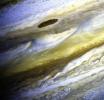
|
-
PIA01524:
-
Jupiter's Equatorial Zone in Exaggerated Color
Full Resolution:
TIFF
(1.733 MB)
JPEG
(84.04 kB)
|

|
1999-06-16 |
Europa
|
Voyager
|
VG ISS - Narrow Angle
|
450x450x3 |
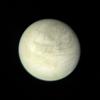
|
-
PIA01970:
-
Europa from 2,869,252 Kilometers
Full Resolution:
TIFF
(308.7 kB)
JPEG
(9.707 kB)
|

|
1999-06-16 |
Io
|
Voyager
|
VG ISS - Narrow Angle
|
600x460x3 |

|
-
PIA01971:
-
Volcanic Explosion on Io
Full Resolution:
TIFF
(643.1 kB)
JPEG
(36.06 kB)
|